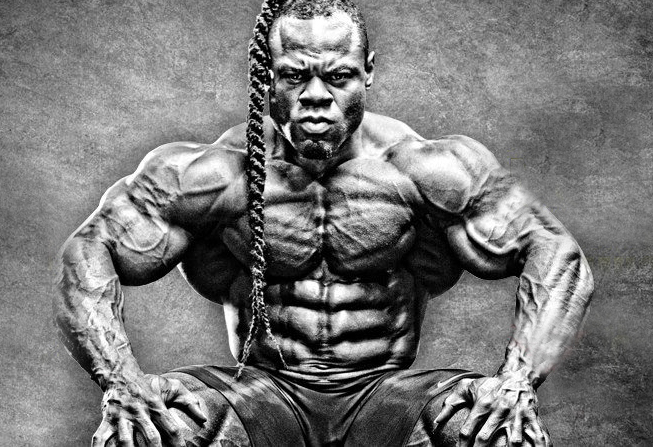Photo Credit: Pro Bodybuilder Kai Greene
No, there’s not.
Or at least, there’s no “optimal” training split for 90% of people that aren’t high-level athletes or physique competitors.
The training split you choose should be based on three factors:
- How much you enjoy the training split.
- Whether or not your schedule supports the training split.
- How hard you’re able to push yourself on the training split while still receiving adequate recovery.
Let’s cover each one of these factors individually.
Enjoyment…It’s Freaking Important.
I know I’ve talked about this before, so I’m not gonna harp on it here.
But, enjoyment affects motivation, motivation affects effort, and effort affects overall progress.
It doesn’t matter if a specific training split is best suited for strength gain or muscle growth on paper.
If you don’t follow what’s on that piece of paper (because you’re not motivated) – or you don’t put forth the effort needed to stimulate results (because you’re not having fun) – you’re not gonna make any progress.
Before you start worrying about what’s “optimal” from a scientific standpoint, figure out what’s “optimal” from an enjoyment standpoint.
Because, what’s been shown – both anecdotally and scientifically – to maximize strength and size gains is certainly important.
But, what’s enjoyable and allows you to have the most fun is more important.
Your Schedule? It Matters.
Most people?
Their lives don’t revolve around the weight room.
In fact for a lot of people, getting in to the weight room 2-3x per week is extremely challenging.
It’d be pretty silly for someone with three kids – who works two jobs and takes classes at night – to try to hop on a high frequency training program that has them squatting 5x per week.
It’d also be silly for a businessman with a packed schedule – who only has 45 minutes to train everyday – to attempt a full body routine where each training session lasts over an hour and a half.
They’re just not gonna be able to do it (or, at the very least, they’re not gonna be able to do it for very long).
Unless you’re a professional athlete – or someone whose life revolves around the weight room – you need to fit your training around your schedule, not your schedule around your training.
How much time you have available to train?
How many days you have available to train?
Where you can train (in relation to your house and job)?
When you can train?
Yeah, these are all important factors.
And they all have an impact on the training split that will be “optimal” for you at a given moment in time.
Effort – and Your Ability to Recover from that Effort – Drives Progress
Lastly, the training split you choose needs to allow you to 1.) Display high levels of effort/intensity during each training session, and 2.) Recover fully – or come close to recovering fully – from each training session.
This is because training creates the environment for adaption, but it’s rest that allows those adaptions to actually take place.
Some people?
They can handle three days of intense training per week, and then need four days off to recover.
Other people?
They can handle six days of intense training per week, and do just fine with only one day off to recover.
Some people respond best to less volume per training session and more frequency.
Other people respond best to more volume per training session and less frequency.
Some people can only train each muscle group or movement pattern once per week (this is usually a mental thing).
Other people can’t handle only training each muscle group or movement pattern once per week.
All of this is individual, and you have to figure out the training split that works best for YOU.
If you’ve been training for a while, you probably know what that training split is.
If you haven’t been training for a while, you’re going to have to experiment.
My Favorite Training Splits
In closing, I want to share with you some of my favorite training splits that I like to use both with myself and many of my clients.
These aren’t the only training splits.
They’re just the ones I feel are the most fun, work well with most people’s schedules, and provide a good balance of stress and recovery.
Give them a shot, and let me know what you think.
Or, if you’d like to share a different training split that you like, I’d love to hear it!
Training Splits –
Lower/Upper Split
- Four training sessions per week
- Two lower body days per week (Monday and Thursday)
- Two upper body days per week (Tuesday and Friday)
- Three recovery days per week (Wednesday, Saturday, and Sunday)
- Each muscle group hit 2-3x per week
Full Body Split
- Three training sessions per week
- Three full body days per week (Monday, Wednesday, Friday OR Tuesday, Thursday, Saturday)
- Four recovery days per week (Tuesday, Thursday, Saturday, Sunday OR Mon- day, Wednesday, Friday, Sunday)
- Each muscle group hit 3x per week
PHAT Split (created by Layne Norton)
- Five training sessions per week
- One lower body day per week (Monday)
- One upper body day per week (Tuesday)
- One push (chest, shoulders, triceps) day per week (Thursday)
- One pull (back and biceps) day per week (Friday)
- One legs (quads, hamstrings, glutes, and calves) day per week (Saturday)
- Two recovery days per week (Wednesday and Sunday) Each muscle group hit 2-3x per week.
Legs/Push/Pull Routine
- Six training sessions per week
- Two legs days per week (Monday and Thursday)
- Two push days per week (Tuesday and Friday)
- Two pull days per week (Wednesday and Saturday)
- One recovery day per week (Sunday)
- Each muscle group hit 2-3x per week
Like What You See?
Get the Smoot Fitness Guide to Getting Stronger - FREE.



Leave a Reply